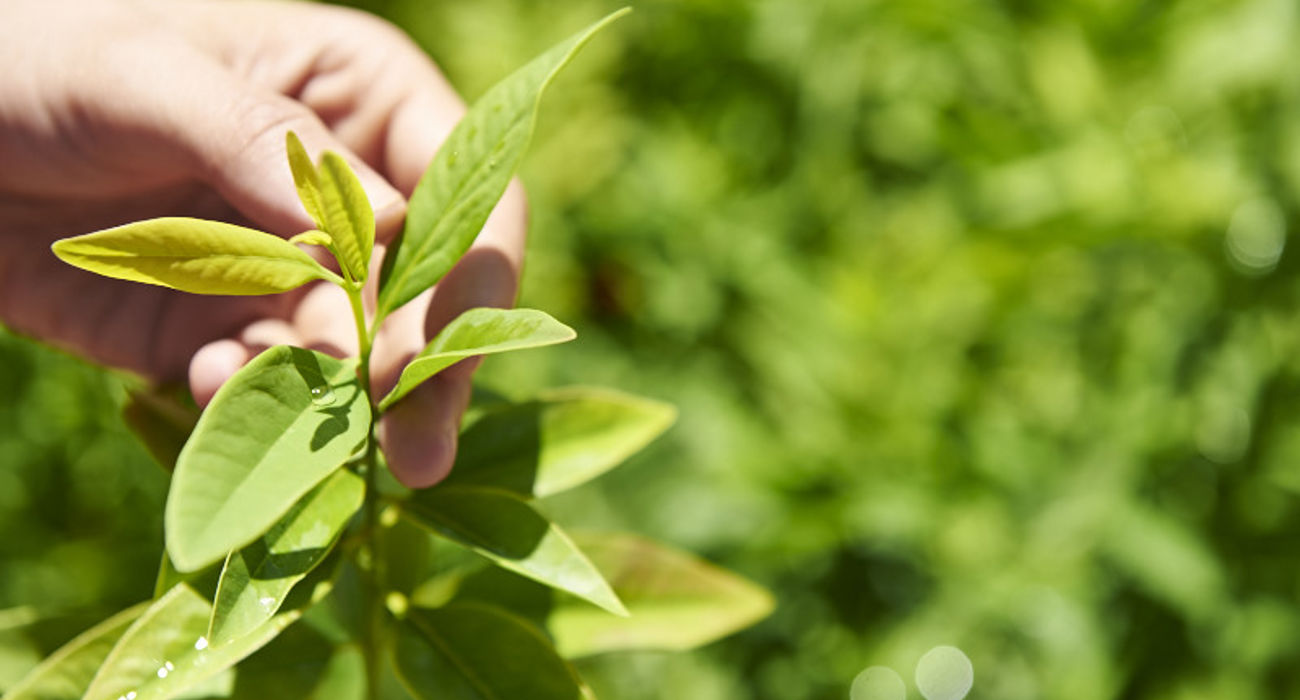Written by Deniz Ataman,
Independent Journalist
It’s safe to say naturals are the original muse of the fragrance industry—and the muse for synthetics. Without naturals, we would be unable to synthesize botanicals to formulate into commercial products we use every day. Synthetics certainly have their place in fragrance and cosmetics, but when it comes to the clean beauty and wellness industries, naturals reign supreme. Ingredient efficacy, provenance and sustainability are critical to conscious consumers looking for authentic storytelling on product labels. Through sustainable harvesting practices in Australia and ongoing clinical studies on active compounds, Indian sandalwood’s (Santalum album) efficacy in fragrance, cosmetics and pharmaceuticals embeds itself into ethical wellness.
Naturals are certainly the dominant, if not leading player in the booming wellness movement. By 2027, the global wellness market is expected to reach USD 97.4 billion at a CAGR of 6.9%1. Natural fragrance ingredients are included in this boom. By 2027, the global fragrance ingredients industry is expected to rise to USD 16.1 billion by 2027, compared to USD 13.6 billion in 20192.
Consumers have often influenced the products that companies produce. As 2020 unfolds, companies are acknowledging conscious consumer demands for sustainable production and transparent labelling. The rise of trends such as ‘A-Beauty,’ multifunctional fragrances and niche organic brands are examples of consumers looking for more natural, simple and responsible options. The wellness movement’s influence also continues to stimulate change in the fragrance industry where mindfulness, meditation and relaxation intersect fine fragrance.
The focus on transparency and wellness has extended to the use of natural products and consumer desire to support businesses choosing sustainably sourced, natural materials. Known for its multi-faceted benefits, interest in Indian sandalwood is rising. By the end of 2026, the global sandalwood market is expected to reach USD 26.8 billion from USD 22.5 billion in 20203. Paired with research on compounds and ecologically sound harvesting methods, this ancient oil is given a chance to thrive in today’s marketplace.

Multi-faceted Benefits
Also known as white sandalwood and East Indian sandalwood, the Indian sandalwood tree is composed of hundreds of naturally occurring chemical compounds. “We let nature do her job and she supplies us with a complex, multifaceted, bioactive ingredient which synthetic materials simply cannot replicate,” explains Dr. Danny Hettiarachchi, Quintis Sandalwood’s Product Manager.
Indian sandalwood possesses over 125 chemical compounds which cannot be replicated by human methods. So complex are these compounds, research is still exploring the benefits and applications of each element—meaning there are unique properties that are yet to be fully understood by modern science. In terms of function, natural sandalwood is reported to be beneficial on skin as an adaptogen, anti-inflammatory and anti-microbial—whereas synthetic alternatives, which have made progress in cosmetic benefits, are still unable to replicate the total bioactivity of its natural counterpart.
Although the fragrance of Indian sandalwood can be mimicked by synthetic alternatives, human creation is limited compared to nature’s own methods in developing complex olfactory profiles.
Alpha and beta santalol are the two major sesquiterpenes in Indian sandalwood. These two compounds contribute significantly to the oil’s signature soft, woody, balsamic odor—which also opened up avenues in synthesizing substitutes. However, the isolation of these molecules offers a one-dimensional facet with a singular note, which is ideal for creating a sandalwood alternative; however, the chemical intricacies of natural sandalwood are irreplaceable in a formulation.
The blend of major components with minor sesquiterpenes, such as alpha and beta-santalene, contribute aromatic nuances to a formulation that synthetics cannot yet achieve. “It’s well-known that alpha-santalol is the active component of Indian sandalwood, but we’re starting to understand that other molecules in this nature’s blend have a significant role to play too,” Dr Hettiarachchi says.
Research indicated the importance of trace constituents in contributing towards the complete sandalwood aromatic profile.4 This is critical in understanding the general difference between natural and synthetic materials. Some of these trace constituents are so minor that even the most advanced chromatography technology cannot identify the full scope of sandalwood’s constituents. In other words, there are important bioactive compounds at play that we have yet to uncover which cannot be included in a synthesized sandalwood.
“Many companies believe there is no ethical, legal and sustainable option for Indian sandalwood, but there is."
Dr. Hettiarachchi
Traceable, Ethical and Certified
“Many companies believe there is no ethical, legal and sustainable option for Indian sandalwood, but there is,” explains Dr. Hettiarachchi. An estimated 50% of Indian sandalwood is illegally harvested and adulterated in today’s market. As a result, it’s considered a vulnerable species according to the International Union for the Conservation of Nature. This has undoubtably provoked the exploration into synthetic sandalwood alternatives but opportunities to purchase a sustainable, traceable and natural Indian sandalwood exist in Australia.
The geographical location of far-north Australia is within the same equatorial zone as Southern India, where Indian sandalwood thrives. Thanks to Quintis’ innovation and management of their plantations, they have been able to supply a fully traceable product to the global market. In addition to their ethical supply, Quintis holds over 20 global certifications which include certified natural and certified organic status.
“Producers may look to synthetic alternatives in terms of traceability and biodegradable benefits, but it already exists in our natural products,” says Dr. Hettiarachchi. Naturals are certainly the muse for synthetics, where major compounds can be isolated and synthesized for commercial use. But with natural sandalwood, it’s all in the details—its complexity is what gives its aromatic depth and richness, offering us humans an opportunity to enhance our memories and fully experience our senses.
Discover our range of traceable, ethical and certified natural sandalwood products.
